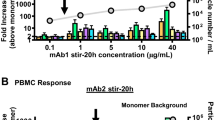Abstract
Purpose
To develop an efficient biocompatible and targeted drug delivery system in which platelets, an essential blood component having a natural affinity for cancer cells, are used as carrier of anticancer drug as delivery of drug to the targeted site is crucial for cancer treatment.
Methods
Doxorubicin hydrochloride, a potent anti cancer drug, was delivered in lung adenocarcinoma cell line (A549) using platelet as a delivery agent. This delivery mode was also tested in Ehrlich ascites carcinoma (EAC) bearing mice in presence and absence of platelets.
Results
The results show that platelets can uptake the drug and release the same upon activation. The efficiency of drug loaded platelets in inducing cytotoxicity was significantly higher in both in vitro and in vivo model, as compared to the free drug.
Conclusions
The proposed drug delivery strategy may lead to clinical improvement in the management of cancer treatment as lower drug concentration can be used in a targeted mode. Additionally the method can be personalized as patient's own platelet can be used for deliver various drugs.







Similar content being viewed by others
Abbreviations
- Dox:
-
Doxorubicin hydrochloride
- EAC:
-
Ehrlich ascites carcinoma
- PPP:
-
Platelet poor plasma
- PRP:
-
Platelet rich plasma
- WP:
-
Washed platelet
References
Goldberg M, Langer R, Jia X. Nanostructured materials for applications in drug delivery and tissue engineering. J Biomater Sci Polym Ed. 2007;18:241–68.
Chonn A, Cullis PR. Recent advances in liposomal drug-delivery systems. Curr Opin Biotechnol. 1995;6:698–708.
Torchilin VP. Recent advances with liposomes as pharmaceutical carriers. Nat Rev Drug Discov. 2005;4:145–60.
Mufamadi MS, Pillay V, Choonara YE, Du Toit LC, Modi G, Naidoo D, et al. A review on composite liposomal technologies for specialized drug delivery. J Drug Deliv. 2011;2011:939851.
Lian T, Ho RJ. Trends and developments in liposome drug delivery systems. J Pharm Sci. 2001;90:667–80.
Kozubek A, Gubernator J, Przeworska E, Stasiuk M. Liposomal drug delivery, a novel approach: plarosomes. Acta Biochim Pol. 2000;47:639–49.
Sharma US, Sharma A. Liposomes in drug delivery: progress and limitations. Curr Opin Biotechnol. 1997;154:123–40.
Mezei M, Foldvari M, Gesztes A, Cardinal L, Behl M, Kowalczyk I. Topical liposomal local anesthetics: design, optimization and evaluation of formulations. Drug Dev Ind Pharm. 1993;19:2499–517.
Nounou MM, El-Khordagui LK, Khalafallah NA, Khalil SA. In vitro release of hydrophilic and hydrophobic drugs from liposomal dispersions and gels. Acta Pharm. 2006;56:311–24.
Mohanraj VJ, Chen Y. Nanoparticles—a review. Trop J Pharm Res. 2006;5:561–73.
Patra HK, Dasgupta AK, Sarkar S, Biswas I, Chattopadhyay A. Dual role of nanoparticles as drug carrier and drug. Cancer Nanotechnol. 2011;2:37–47.
Soppimath KS, Aminabhavi TM, Kulkarni AR, Rudzinski WE. Biodegradable polymeric nanoparticles as drug delivery devices. J Control Release. 2001;70:1–20.
Li YF, Chen C. Fate and toxicity of metallic and metal-containing nanoparticles for biomedical applications. Small. 2011;7:2965–80.
Ahamed M, Alsalhi MS, Siddiqui MK. Silver nanoparticle applications and human health. Clin Chim Acta. 2010;411:1841–8.
Deb S, Chaterjee M, Bhattacharyay J, Lahiri P, Chaudhuri U, Pal Choudhuri S, et al. Role of purinergic receptors in platelet-nanoparticle interactions. Nanotoxicology. 2007;1:93–103.
Nurden AT, Nurden P, Sanchez M, Andia I, Anitua E. Platelets and wound healing. Front Biosci. 2008;13:3532–48.
Hawiger J. Formation and regulation of platelet and fibrin hemostatic plug. Hum Pathol. 1987;18:111–22.
Mehta P. Potential role of platelets in the pathogenesis of tumor metastasis. Blood. 1984;63:55–63.
Habermann BF. Targeting tumor cell-platelet interaction in breast cancer metastasis. Pathophysiol Haemost Thromb. 2003;33:56–8.
Nieswandt B, Hafner M, Echtenacher B, Männel DN. Lysis of tumor cells by natural killer cells in mice is impeded by platelets. Cancer Res. 1999;59:1295–300.
Deb S, Patra HK, Lahiri P, Dasgupta AK, Chakrabarti K, Chaudhuri U. Multistability in platelets and their response to gold nanoparticles. Nanomedicine. 2011;7:376–84.
Holmsen H, Day HJ, Stormorken H. The blood platelet release reaction. Scand J Haematol Suppl. 1969;8:3–26.
Packham MA. Role of platelets in thrombosis and hemostasis. Can J Physiol Pharmacol. 1994;72:278–84.
Shattil SJ, Anaya-Galindo R, Bennett J, Colman RW, Cooper RA. Platelet hypersensitivity induced by cholesterol incorporation. J Clin Invest. 1975;55:636–43.
White JG. Why human platelets fail to kill bacteria. Platelets. 2006;17:191–200.
White JG. Platelets are covercytes, not phagocytes: uptake of bacteria involves channels of the open canalicular system. Platelets. 2005;16:121–31.
Bhattacharyya A, Choudhuri T, Pal S, Chattopadhyay S, Datta GK, Sa G, et al. Apoptogenic effects of black tea on ehrlich’s ascites carcinoma cell. Carcinogenesis. 2003;24:75–80.
Pal S, Choudhuri T, Chattopadhyay S, Bhattacharya A, Datta GK, Das T, et al. Mechanisms of curcumin-induced apoptosis of ehrlich’s ascites carcinoma cells. Biochem Biophys Res Commun. 2001;288:658–65.
Singh NP, McCoy MT, Tice RR, Schneider EL. A simple technique for quantitation of low levels of dna damage in individual cells. Exp Cell Res. 1988;175:184–91.
Ardlie NG, Packham MA, Mustard JF. Adenosine diphosphate-induced platelet aggregation in suspensions of washed rabbit platelets. Br J Haematol. 1970;19:7–17.
Schrand AM, Rahman MF, Hussain SM, Schlager JJ, Smith DA, Syed AF. Metal-based nanoparticles and their toxicity assessment. Wiley Interdiscip Rev Nanomed Nanobiotechnol. 2010;2:544–68.
Acknowledgments and Disclosures
We thank ICMR, India (grant no. 45/06/2011/NAN-BMS) for supporting the research. We thank Dr. Suryyani Deb Dr. Hirak Kr Patra (Calcutta University) and Ms. Puja Biswas (DBT,IPLS) for their suggestions and help.
Author information
Authors and Affiliations
Corresponding author
Electronic Supplementary Material
Below is the link to the electronic supplementary material.
ESM 1
(DOC 3440 kb)
Rights and permissions
About this article
Cite this article
Sarkar, S., Alam, M.A., Shaw, J. et al. Drug Delivery Using Platelet Cancer Cell Interaction. Pharm Res 30, 2785–2794 (2013). https://doi.org/10.1007/s11095-013-1097-1
Received:
Accepted:
Published:
Issue Date:
DOI: https://doi.org/10.1007/s11095-013-1097-1




